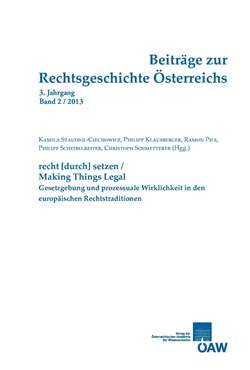
Beiträge zur Rechtsgeschichte Österreichs 2 / 2013, pp. 512-519, 2014/01/30
recht [durch] setzen - Making Things Legal.
Gesetzgebung und prozessuale Wirklichkeit in den europäischen Rechtstraditionen

During the Christianization of the Roman Empire the matter of the relationships between State and Church became essential. In this context, one of the most interesting aspects concerns the fight against the phenomenon of heresy in its many forms. A meaningful attempt was undertaken by the first Christian emperor, Constantine the Great. He tried to find a solution to the divisions which were starting to trouble the ecclesiastical community and therefore the majority of the people. He tried to realize his aim, both through the Council of Nicaea and through legal instruments. He legislated using mainly the lex generalis – a kind of imperial constitution, which perfectly embodied the spirit of that time. Around 325 AD.– he issued an edict against some sects of radical heretics. The text represents the emperor's political attitude including his chancellery, which was in the hands of the bishops most of the time. It seems to contain all the aspects which characterize the Theodosian legislation, for example the condemnation to a series of inabilities or the comparison between the religious deviance and the concepts of sin like a mortal disease. Object of the work is to investigate the construction of a law in connection with the repression of heresy, by making some remarks about its concrete procedure.